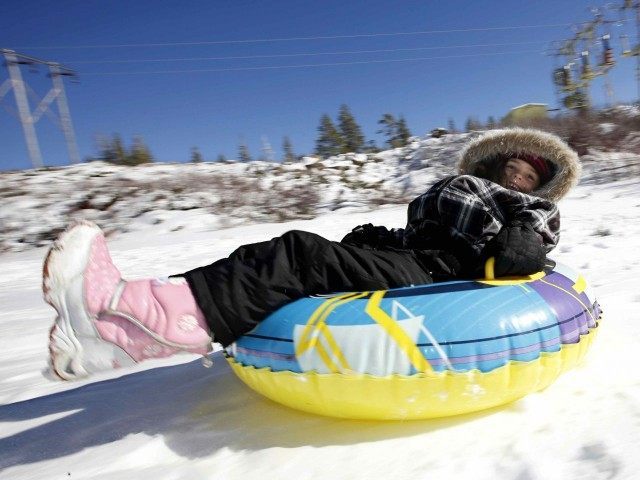Despite El Niño generating three times the amount of snow in Mammoth in the first half of this month as it did for the entire month of November last year, California’s failure to build infrastructure means most rain will be lost to run-off and flooding.
Mammoth Mountain recorded 5 inches of snowfall on November 15 to bring its monthly total to 38 inches, about three times the 13 inches for the entire month of November last year. The mountain is already enjoying its best ski and board year since 2010 with a 22 inch snow base, 30 inches at midway station–and more snow expected on the Monday.
But despite environmentalist fantasies that climate change means permanent drought, the arriving El Niño now puts many Californians at huge risk for deaths and destruction due to political failure to prioritize investing sufficient money to maintain the state’s flood control dams and supporting infrastructure.
The Department of Agriculture’s Natural Resources Conservation Service has declared about 20 percent of America’s flood-control dams “high-hazard” because their deterioration could endanger the lives of people living nearby.
California is at highest risk, because it has 1,400 of the nation’s 11,000 flood control dams.
The state stopped expanding its flood-control system almost four decades ago. Shasta Lake was created by damming three rivers in 1945, and the 775 foot Oroville Dam built to contain the Feather River was finished in 1968. But despite a 70 percent population growth from 22.3 million to 38 million today, California has not completed a dam or major reservoir in 36 years.
Despite being at danger of violent Pacific super-storms potentially unleashing a mega-flood that could wreak untold damage to the capital region and much of Northern California, Governor Brown and the Democrat-controlled legislature reprogramed the state’s share of President Obama’s $787 billion stimulus spending for boondoggles like high-speed rail and the State Energy Program for solar and wind power.
The National Weather Service warned on November 12 that this year’s El Niño “could rank among the top three strongest episodes” since 1950. Their outlook is for below average temperatures and above-median precipitation across the southern tier of the United States.
This year’s El Niño has the potential to be on par with worst storms in California’s history, including the monster from December 26, 1998 through January 3, 1997. Over 20 inches of rain fell on the state ,causing $1.8 billion in damage and forcing hundreds of thousands to evacuate.
One month later, the February 1998 El Niño slammed California with a nearly continuous month of flooding, mudslides, and agriculture disruptions. The storm set an all-time-record of 17.33 inches of rainfall, which had stood since 1867. By March, there were 17 weather-related deaths, and 35 counties were declared national disasters.
Researchers from University of California Davis and the UC Cooperative Extension are now scrambling to find alternative methods of flood control to capture some of the expected massive water run-off by diverting raging river waters into the Central Valley’s extensive private network of agricultural irrigation canals.
Scientists see the potential of up to 3.5 million acre feet of storm run-off a year being diverted onto 3.6 million acres of suitable farmland, where it could potentially seep underground to recharge bone-dry aquafers.
UC Davis Professor Helen Dahlke, who tested the technique on fields in Scott’s Valley already, told the San Francisco Chronicle, “That could go a long way toward replenishing the 6 million acre-feet growers had to pump this year alone to cope with California’s drought.”
Her experiments included recharging ground water by applying “up to 29 feet of water–that’s like a five-story house–and still having alfalfa” grow back in the same year.
But Dahlke cautioned, “Not many scientific studies have been done to see how much water plants can tolerate and still produce normal yields, and farmers would never over-apply water during the growing season.”
California has some of the most creative technical minds on the planet. Unfortunately, it may take a horrendous drought and then a destructive El Niño before the state prioritizes building more flood control infrastructure.

COMMENTS
Please let us know if you're having issues with commenting.